20 Low-Maintenance Perennials for Shade Gardens
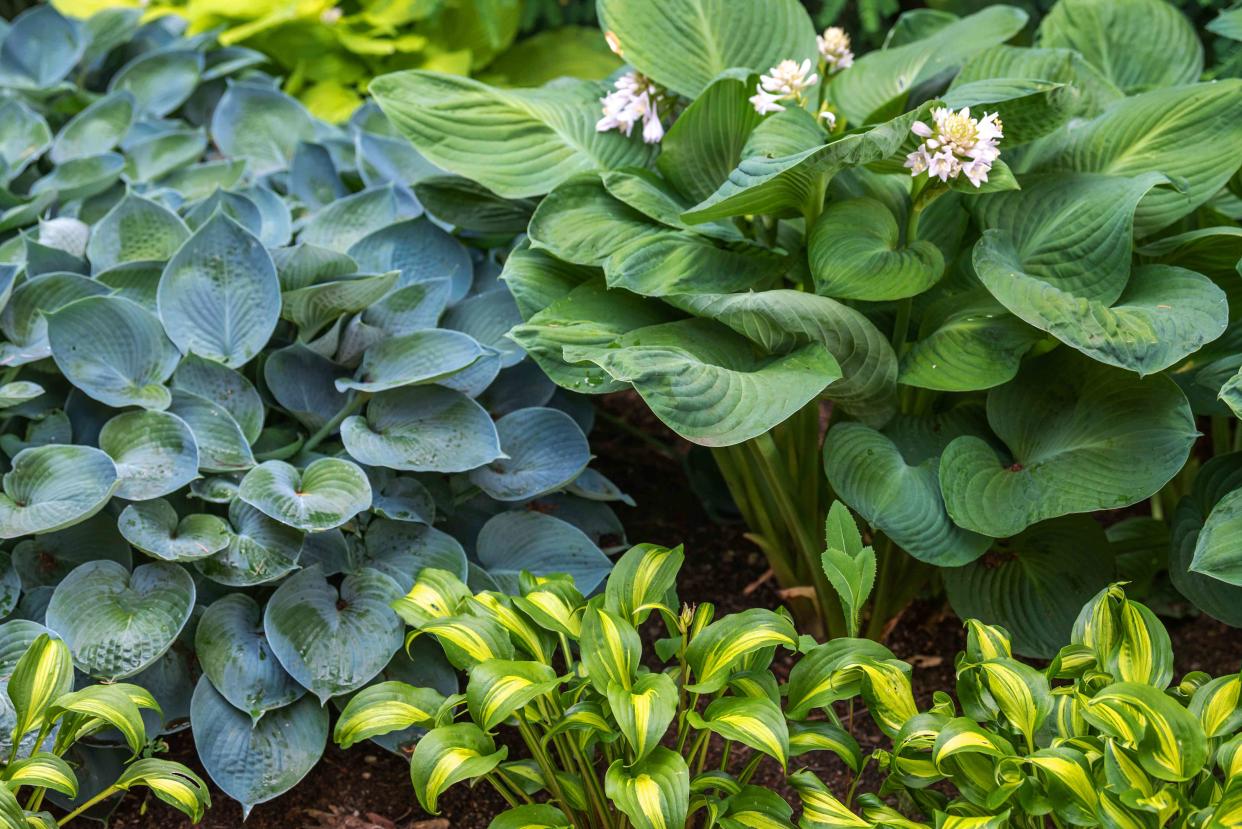
The Spruce / Evgeniya Vlasova
You don’t need sun for a beautiful garden. There are eye-catching low-maintenance perennials that will not only thrive in shade but are also easygoing when it comes to soil requirements. Many perennials are long-lived and spread over time. Once they are established, these plants require only minimal care. With their foliage and often vibrant flowers, shade-loving perennials add beauty to your landscape in spring, summer, and fall.
These 20 low-maintenance perennials for shade are the laid-back plants you need for a loose, colorful forest-inspired look that comes back year-after-year.
Levels of Shade
The light requirements for plants that tolerate shade distinguish between full and partial shade. Full shade does not mean that the plant does not get any sunlight at all, it translates into four hours of full sunlight, mostly in the morning or late afternoon. Partial shade is a location that gets full sun for four to six hours per day and relief from the intense sunlight in the late afternoon from a nearby tree or structure that blocks the sun.
A third, less frequently used term to describe a level of shade is dappled or filtered sun where the sunlight filters through the branches and foliage of deciduous trees. This level of shade is typically found in a woodland setting.
Meet the Expert
Deborah Niemann is a writer and sustainability expert who runs The Thrifty Homesteader.
Aaditya Bhatta is an editor and founder of Plantscraze.
Hosta
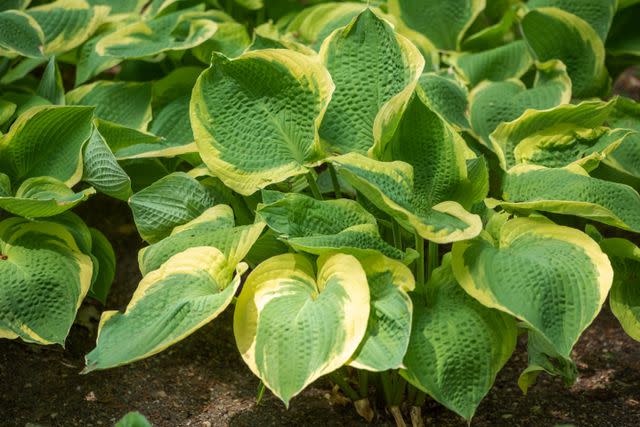
The Spruce / Evgeniya Vlasova
Deborah Niemann of The Thrifty Homesteader reports having 100% success with growing hostas, which are known for being an easy to grow, shade-loving plant that comes back year-after-year. “They have so many different variegated leaves now—green and ivory, green and white, green and pink, green and red, green and yellow, green and orange—and the amount of variegation varies from one variety to another,” says Niemann.
These groundcover plants are often sold as bare roots that are planted in early spring, and they will often produce white or purple blooms during the summer.
Name: Hosta (Hosta spp.)
USDA Hardiness Zones: 3-9
Flower Color: White, purple
Light: Full shade to part sun
Hellebore
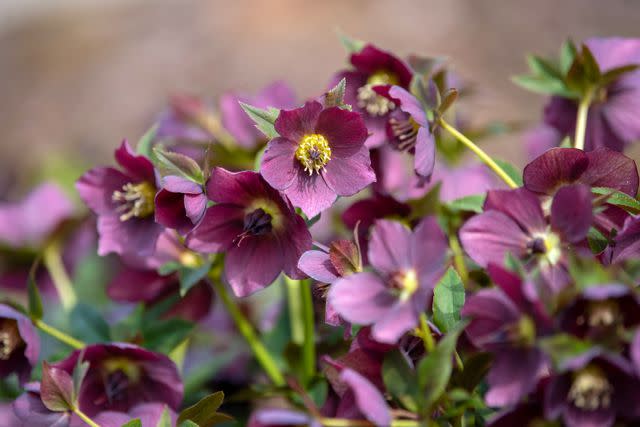
The Spruce / Evgeniya Vlasova
Hellebores, also known as the Christmas Rose or Lenten Rose, have flowers with a delicate, tissue-paper like appearance in soft shades of pink, maroon, purple, and even black. Their thick evergreen foliage grows slowly in clumps, and they’re an excellent groundcover that blooms early in spring from February to May.
Name: Hellebore (Helleborus spp.)
USDA Hardiness Zones: 5-8
Flower Color: Dusty pink, maroon, purple, and more
Light: Full shade to part shade
Periwinkle
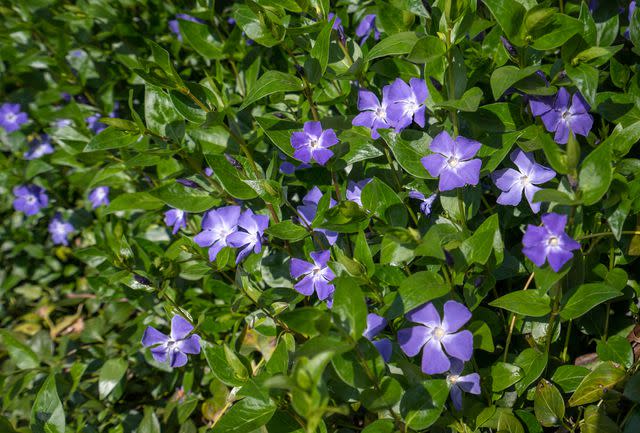
The Spruce / Evgeniya Vlasova
If you have a large shady space to fill, periwinkle vines will quickly creep throughout your garden. It comes back year after year with its charming five-pointed blooms in cool shades of purple, white, lavender, and blue. This hardy plant will spread almost anywhere and it’s not intimidated by sun, shade, or even poor soil.
Common periwinkle is considered an invasive species in parts of the United States.
Name: Periwinkle (Vinca minor)
USDA Hardiness Zones: 4-9
Flower Color: Blue, lavender, purple, white
Light: Shade to full sun
Columbine
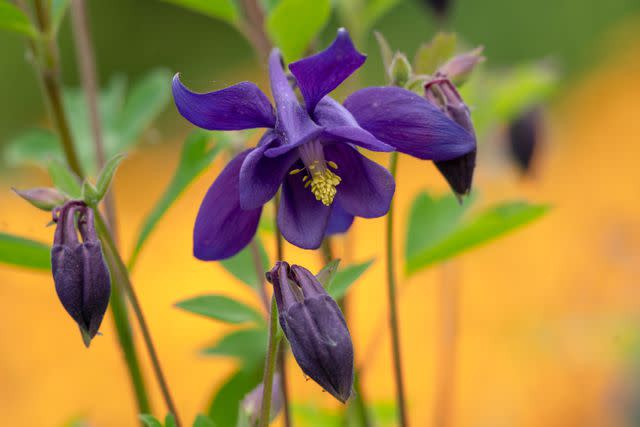
The Spruce / Evgeniya Vlasova
The delicate, airy columbine flower is a favorite of hummingbirds and bees, making it a perfect choice for a pollinator garden. Blooming in mid-spring, these tall flowers provide height and color in a lush, wooded garden, and there are dozens of varieties that provide a rainbow of blooms from orange to pink, white, red, and yellow.
Name: Columbine (Aquilegia spp.)
USDA Hardiness Zones: 3-8
Flower Color: Blue, orange, pink, purple, red, white, yellow
Light: Partial to full shade
Coral Bells
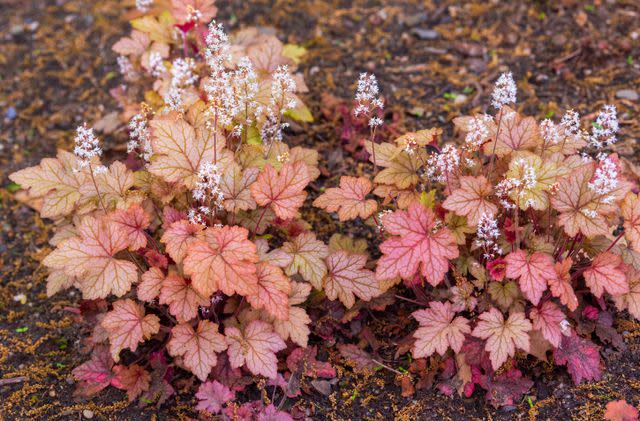
The Spruce / Evgeniya Vlasova
The leaves of coral bells put on almost as much of a show as the blooms, providing big, leafy color in shades of green, purple, black, red, and, of course, coral. They grow in low mounds with tall bell-shaped flowers appearing in spring. In warmer climates, coral bells are often evergreen, adding color to gardens year-round.
Name: Coral bells (Heuchera spp.)
USDA Hardiness Zones: 4-9
Flower Color: Red, white, pink, orange
Light: Partial shade
Bleeding Heart
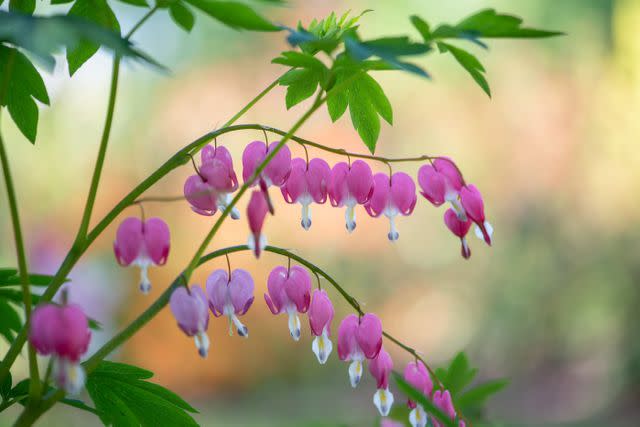
The Spruce / Evgeniya Vlasova
Bleeding heart is one of the most striking spring flowers and it makes only a short appearance each spring, flowering in the early cool days of the season before retreating once the temperatures warm up. Its flower looks like a pink heart with a droplet from the bottom, giving it a dramatic, romantic look. Bleeding heart does best in a woodland setting with partial shade.
Name: Bleeding heart (Lamprocapnos spectabilis)
USDA Hardiness Zones: 3-9
Flower Color: Pink, white, red
Light: Partial shade
Tufted Hairgrass
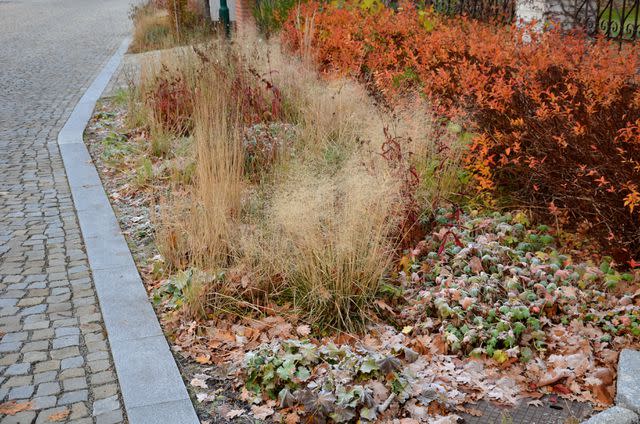
beekeepx / Getty Images
One of many ornamental grasses, tufted hairgrass grows particularly well in shady areas. With cloud-like tufts that grow two to three feet tall, this grass adds both height and textured interest to a shade garden, rising high above many of the ground-loving plants. In summer and fall, there are soft light green and yellow flowers that float above its tall blades.
Name: Tufted hairgrass (Deschampsia cespitosa)
USDA Hardiness Zones: 4-6
Flower Color: Light green to light yellow
Light: Partial shade
Japanese Painted Fern
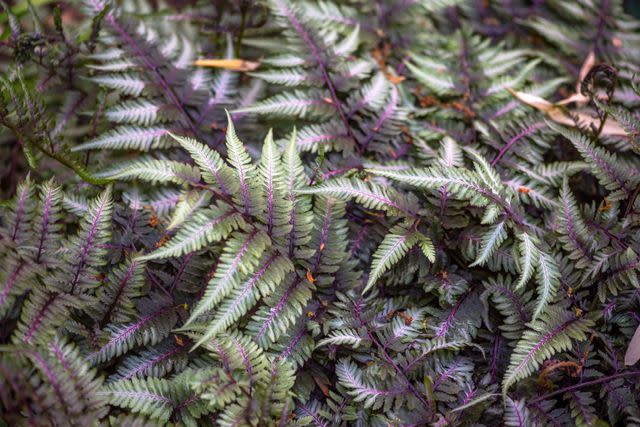
The Spruce / Evgeniya Vlasova
The Japanese painted fern is a low-lying fern that grows well in wooded, shady gardens, and offers gardeners an eye-catching addition of color and depth. While other ferns have solid green leaves, the Japanese painted fern lives up to its name, with thick fronds that look like they been swept with a variety of paint brushes, ranging from silvery gray to purple.
Name: Japanese painted fern (Athyrium niponicum)
USDA Hardiness Zones: 3-8
Light: Partial shade to full shade
Astilbe
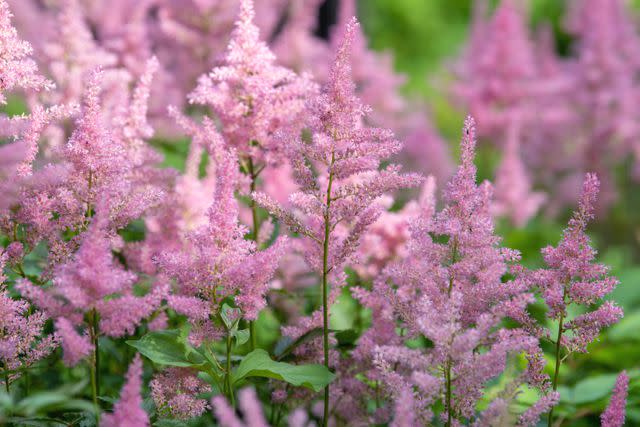
The Spruce / Evgeniya Vlasova
Tufts of pink, red, purple, and white rise high above the easy-to-grow astilbe, giving it a cotton candy-like appearance and adding height to a shade garden. These soft, long-blooming plants are slow-growing, but they come back year-after-year, providing a lovely touch of color and texture.
Aaditya Bhatta, Editor and Founder of Plantscraze, says, "Divide the clumps of astilbe every two to three years to help with rejuvenation."
Name: Astilbe (Astilbe spp.)
USDA Hardiness Zones: 3-8
Flower Color: Pink, red, purple, white
Light: Partial to full shade
Lily of the Valley
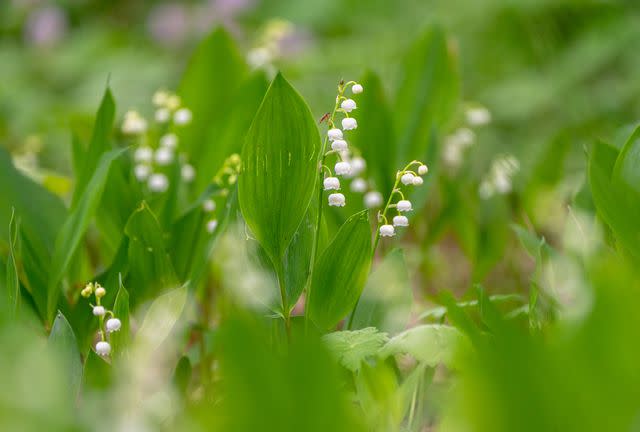
The Spruce / Evgeniya Vlasova
Lily of the valley is known for its charming and small white bell-like flowers that have an instantly recognizable fragrance that’s imitated in perfumes and candles alike. These thick-leafed plants grow in clumps that spread easily and cover the ground with their dense green leaves.
Name: Lily of the valley (Convallaria majalis)
USDA Hardiness Zones: 3-8
Flower Color: White
Light: Partial shade
Solomon's Seal
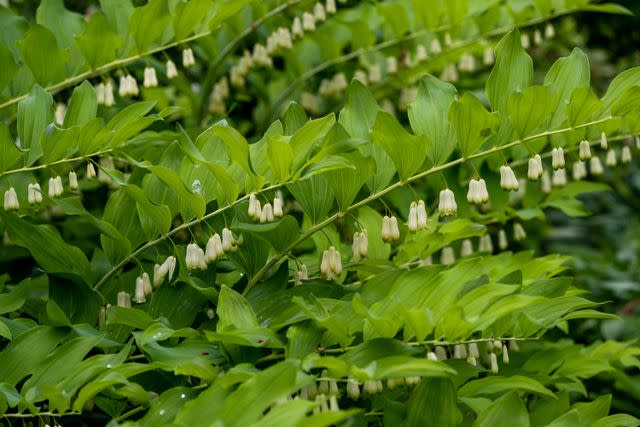
The Spruce / Evgeniya Vlasova
Solomon’s seal are pretty woodland flowers that are best for those with patience—they may take several years to reach the point of blooming. Once they bloom, however, they have delicate white or pink flowers that eventually drop into berries, lengthening the time that they produce visual interest. The foliage fades to yellow in fall.
Name: Solomon’s seal (Polygonatum spp.)
USDA Hardiness Zones: 3-9
Flower Color: White, pink
Light: Partial sun to shade
Foxglove
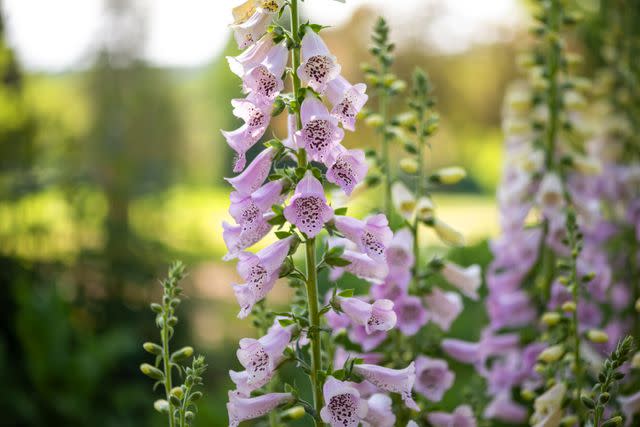
The Spruce / Evgeniya Vlasova
Tall, abundant stems filled with tubular, speckled blooms give foxglove its easily identifiable appearance that feels like it belongs in an overflowing English cottage garden. These stunning plants add vibrant color to a shade garden and they self-seed, spreading their tall blooms year-after-year.
Name: Foxglove (Digitalis purpurea)
USDA Hardiness Zones: 4-10
Flower Color: Pink, purple, red, white, yellow
Light: Full sun to partial shade
Woodland Phlox
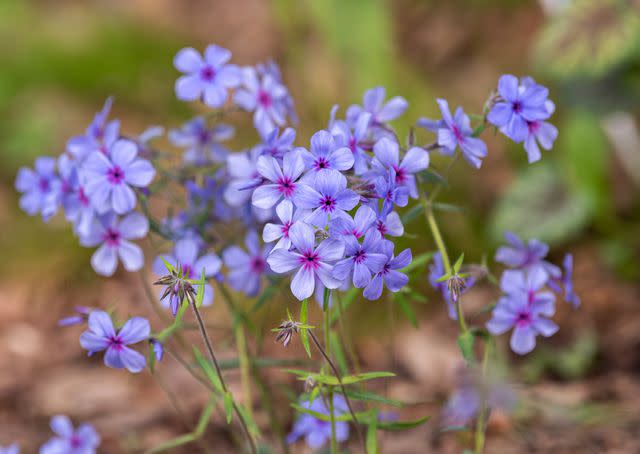
The Spruce / Evgeniya Vlasova
The dainty, star-like flowers of woodland phlox form a carpet of blooms across shade gardens in April and May. This groundcover plant is native to much of North America and, as the name would suggest, thrives in the partial shade and dappled sunlight of wooded areas. Its purple and blue blooms are known to attract hummingbirds and other pollinators in native gardens.
Name: Woodland phlox (Phlox divaricata)
USDA Hardiness Zones: 3-8
Flower Color: Purple, blue
Light: Partial shade
Virginia Bluebells
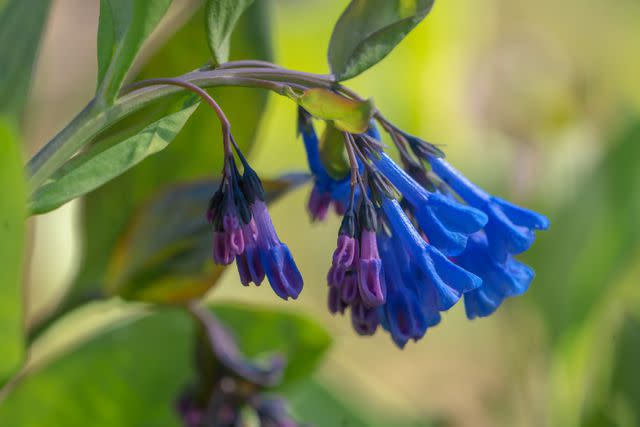
The Spruce / Evgeniya Vlasova
With bright pink buds that bloom into blue bell-shaped flowers, Virginia bluebell is a charming woodland plant that attracts pollinators from March to May. These native plants spread easily and grow back year-after-year, providing a gentle pop of color in forest areas and thriving in partial to full shade.
Name: Virginia bluebells (Mertensia virginica)
USDA Hardiness Zones: 3-8
Flower Color: Blue
Light: Partial to full shade
Creeping Jenny
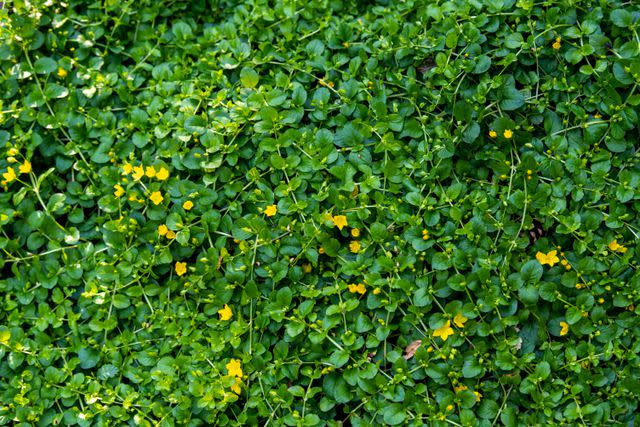
The Spruce / Evgeniya Vlasova
Creeping Jenny’s delicate chartreuse foliage gets its name from its tendency to quickly creep and take over a garden, which is exactly what you may need if you’re looking for groundcover in a partially shaded area. Its grows easily and cascades over the side of rock gardens and planters alike, making it a favorite as a filler plant.
Name: Creeping Jenny (Lysimachia nummularia)
USDA Hardiness Zones: 4-9
Flower Color: Yellow
Light: Full sun to partial shade
Deadnettle
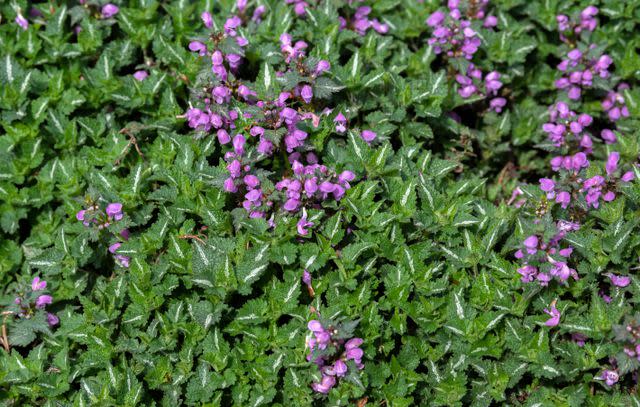
The Spruce / Evgeniya Vlasova
For long-lasting blooms, look to spotted deadnettle, a low-lying plant with silver and green leaves that frequently bloom all summer long. Deadnettle thrives in shady, moist woodland areas, where it adds vibrant color to green groundcover.
Name: Spotted deadnettle (Lamium maculatum)
USDA Hardiness Zones: 4-8
Flower Color: Purple, pink, or white
Light: Full to partial shade
Bunchberries
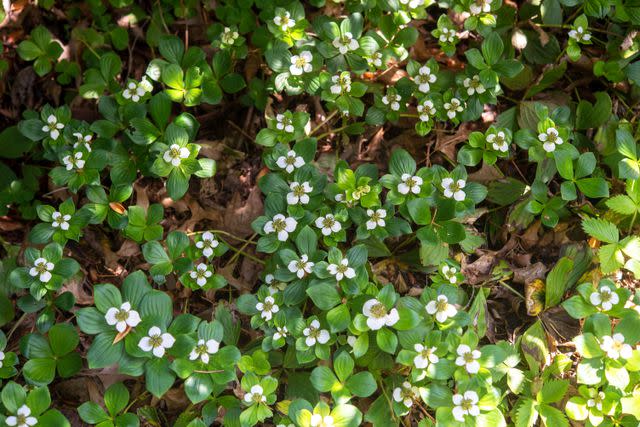
The Spruce / Evgeniya Vlasova
Bunchberries are popular woodland plants that are native to North America and resemble a tiny dogwood flower, except they grow on the ground, not on a tree. Their four-petaled white flowers grow in small clumps in moist areas, and, after the blooms are gone, they leave behind bunches of scarlet berries, hence the name.
Name: Bunchberries (Cornus canadensis)
USDA Hardiness Zones: 2-7
Flower Color: White
Light: Partial to full shade
Calendula
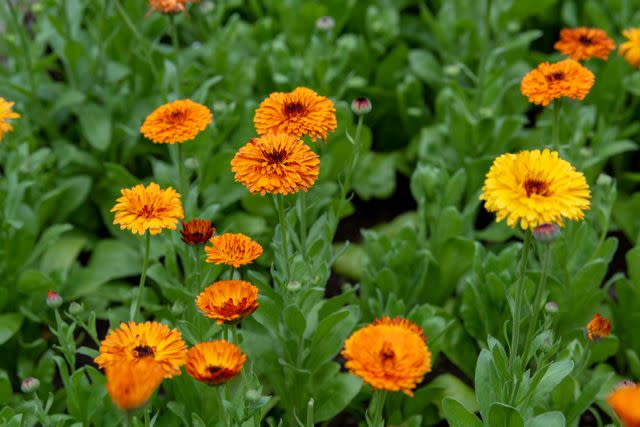
The Spruce / Evgeniya Vlasova
While calendula can be grown in pots, they're also popular as shade garden plants, providing a sunny pop of yellow or orange. Calendula do well in the sun, but it doesn’t like to get too hot, and partial shade is where it thrives.
Name: Calendula (Calendula officinalis)
USDA Hardiness Zones: 9-11
Flower Color: Yellow, orange, red, white, pink
Light: Full sun to partial shade
Primrose
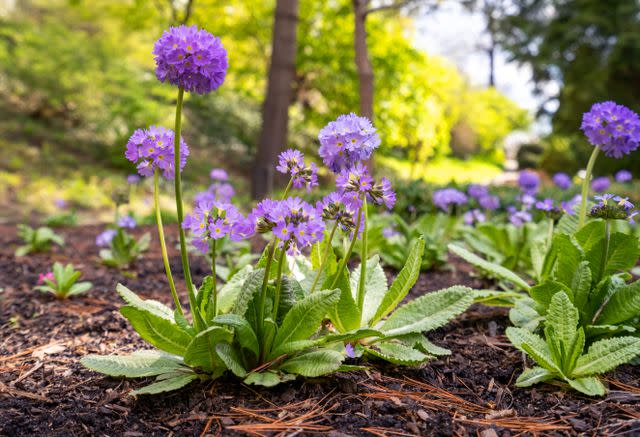
The Spruce / Evgeniya Vlasova
Clusters of darling primrose flowers provide abundant color in shade gardens throughout the spring and the bloom will keep producing if deadheaded regularly. Because of the variety of colors available, you may want to buy the flowers once they’ve already bloomed so you know exactly what you’re getting.
Name: Primrose (Primula spp.)
USDA Hardiness Zones: 3-8
Flower Color: Red, pink, orange, yellow, blue, purple, white
Light: Partial to full shade
Siberian Bugloss
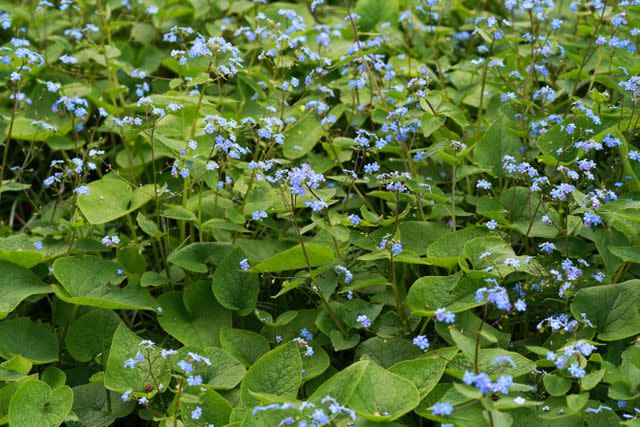
The Spruce / Evgeniya Vlasova
Tiny blue flowers are scattered across the large green leaves of Siberian bugloss, a shade loving plant that spreads via rhizomes. It fills in a shady yard as a thick groundcover and will come back year-after-year.
Name: Siberian bugloss (Brunnera macrophylla)
USDA Hardiness Zones: 3-8
Flower Color: Blue
Light: Partial shade to full shade
Pros & Cons of a Shade Garden
If your yard gets mostly shade, don’t despair, there are advantages and disadvantages to a shade garden. While full and partial shade is not conducive to growing most flowering and fruiting plants—most vegetables need full sun—you can make up for it by choosing ornamental plants that stand out by their foliage.
Water-wise, a garden in the shade also has pros and cons. After rainfall or watering, the soil does not dry out as fast as in full sun. If there is excessive moisture, however, soil that remains wet for longer may lead to fungal diseases. Another plus of shade is that there are generally fewer weeds than in full sun.
If you don't have a lot of vertical space, consider planting a shade-loving vine.
Deep or dark shade with less than four hours of sun every day is a landscaping challenge because there are very few plants such as ferns that thrive in those conditions.
Frequently Asked Questions
What shade perennials are easiest to grow?
Astilbe, coral bells, hosta, and hellebore are among the easiest perennials to grow in a shade garden. Some varieties are more shade-tolerant than others so make sure to select one that best fits your light conditions.
What shade perennials bloom the longest?
Yellow corydalis (Corydalis lutea) is one of the longest-blooming perennials, flowering from late spring through frost. It is suitable for USDA zones 4 to 8.
Which perennials need the least amount of sun?
Most ferns thrive with little sun. Some thrive in dry shade while others need consistent moisture. Select a fern according to the natural soil moisture.
Read Next: 30 Best Shrubs for Shade in Your Yard
Read the original article on The Spruce.

